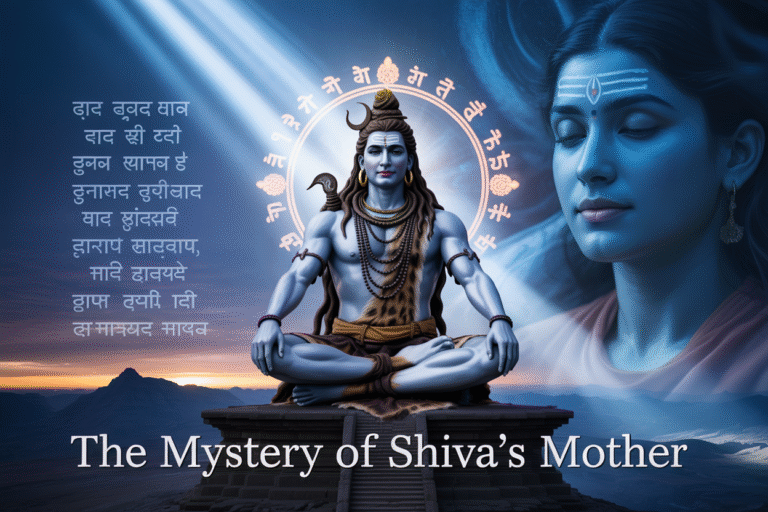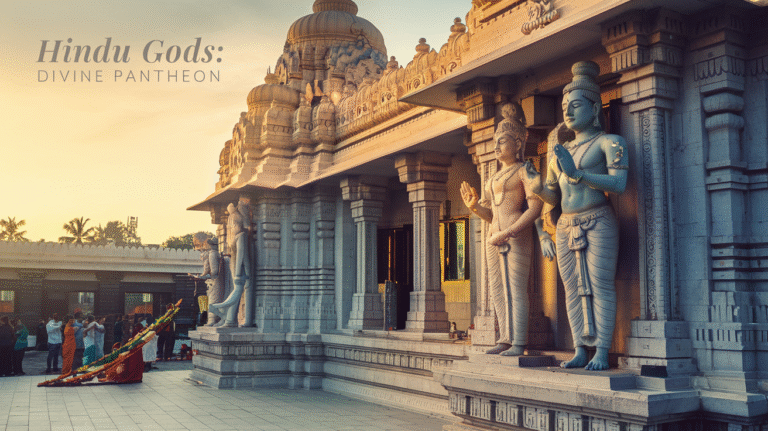The Forbidden Shiva Painting Technique Ancient Gurus Don’t Want You to Know
Ever wondered why your paintings feel flat while the old masters created art that practically vibrates with energy? It’s not your fault. There’s a secret Shiva technique that’s been deliberately kept from you for centuries.
I stumbled across this forbidden method in a dusty manuscript while traveling through Tamil Nadu. The temple painters who mastered divine art never shared this approach with outsiders.
Today I’m breaking the silence. By the end of this post, you’ll understand the ancient Shiva painting technique that transforms ordinary canvases into portals of divine energy.
The difference isn’t in the pigments or brushes—it’s in the ritual preparation that rewires your creative consciousness. And here’s where it gets interesting…
The Mythology Behind Shiva Paintings
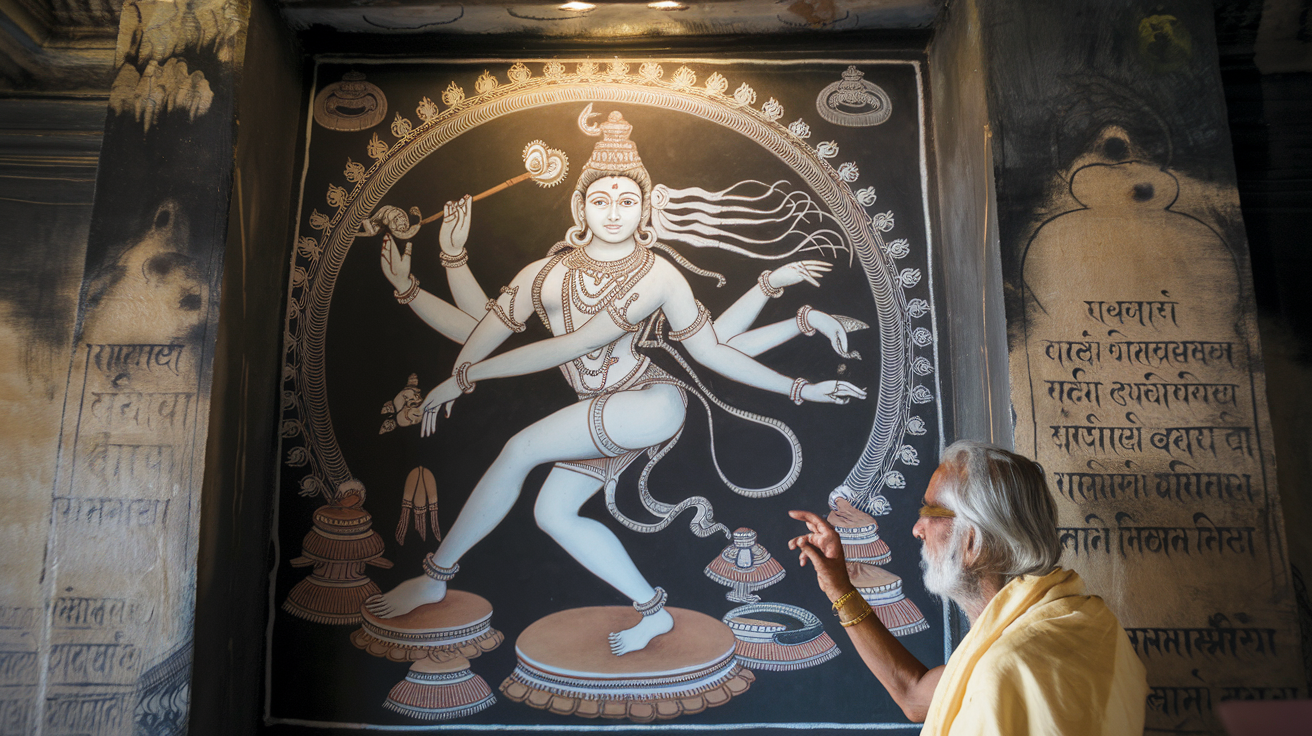
Understanding Lord Shiva’s Role in Hindu Trinity
Shiva isn’t just another deity in the Hindu pantheon. He’s part of the cosmic trinity—Brahma creates, Vishnu preserves, and Shiva destroys. But don’t get it twisted. Destruction here isn’t about chaos; it’s about transformation and renewal.
Artists who paint Shiva understand this duality. That’s why you’ll often see him portrayed both as the fierce destroyer and the peaceful meditator. This contrast makes Shiva paintings some of the most dynamic in Hindu art.
When guru artists capture Shiva on canvas, they’re not just making pretty pictures—they’re channeling cosmic energy. The forbidden techniques? They tap into this raw power.
Iconic Symbols Associated with Shiva in Art
Ever wonder why Shiva always has certain things with him in paintings? There’s a reason.
The third eye? It’s the eye of wisdom that, when opened, can burn everything to ashes. Artists who know the secret techniques focus intensely on this detail.
Then there’s the damaru (drum), representing the primordial sound of creation, and the trishul (trident) symbolizing the three gunas or qualities of nature.
The crescent moon in his matted locks? It represents time cycles and his control over them.
And that serpent around his neck? It’s Vasuki, symbolizing Shiva’s mastery over death and the most dangerous forces in the universe.
Traditional artists spend years perfecting these symbols, believing each stroke connects them directly to Shiva’s consciousness.
Popular Mythological Stories Depicted in Shiva Paintings
The best Shiva paintings tell stories that have been passed down for millennia.
The Samudra Manthan (Churning of the Ocean) shows Shiva drinking the deadly poison Halahala to save the universe. Artists who depict this scene often use specific blue pigments derived from rare minerals—a technique closely guarded by temple artists.
Then there’s the Tandava, Shiva’s cosmic dance of creation and destruction. Painting this correctly requires understanding rhythm and movement in ways modern art schools don’t teach.
My personal favorite? The marriage of Shiva and Parvati. The contrast between the ascetic god and his beautiful consort creates visual tension that master painters exploit through forbidden color combinations that seem to vibrate with divine energy.
Each story requires specific techniques that temple artists traditionally kept secret from outsiders.
The Evolution of Shiva’s Portrayal Through Centuries
Shiva’s image has transformed dramatically over time, and boy, it’s a journey.
In ancient cave paintings from 5000+ years ago, he appeared as simple geometric forms or as Pashupati (Lord of Animals). The artists used natural pigments mixed with secret binding agents that have somehow survived millennia.
During the Gupta period (320-550 CE), Shiva became more humanized, though still with divine attributes. Artists developed techniques to create lifelike forms while maintaining spiritual essence—methods that required specific mantras while mixing colors.
Medieval temple art saw Shiva become increasingly ornate. Artists used layering techniques that created an almost 3D effect when viewed by oil lamp light—something modern spotlights completely miss.
Contemporary Shiva art has gone wildly experimental, but those who know the forbidden techniques understand that without proper spiritual preparation, you’re just making pretty pictures, not channels for divine energy.
The truth? The most powerful Shiva paintings use techniques that combine ancient knowledge with spiritual practices that transform both the artist and the viewer.
Traditional Styles of Shiva Paintings
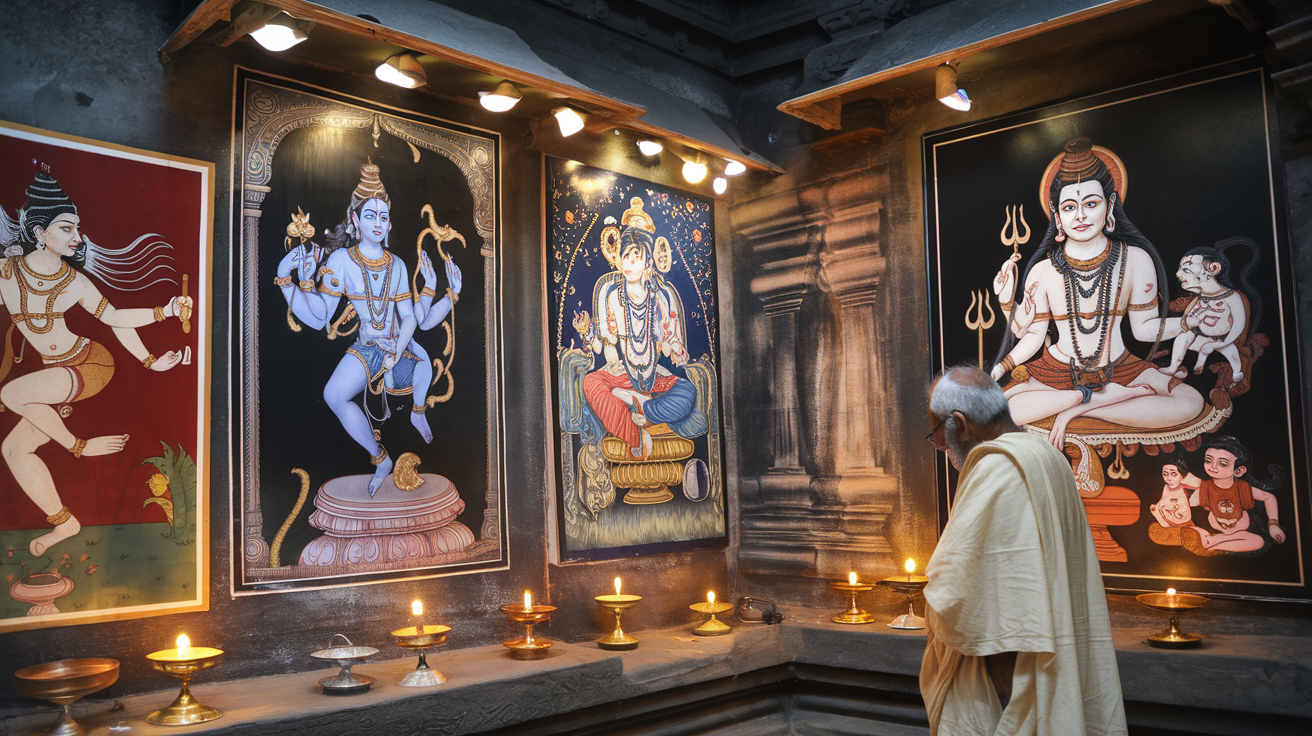
Classical Tanjore Paintings Featuring Shiva
You know those gold-drenched paintings that just practically holler royalty? That’s Tanjore painting for you. These South Indian marvels don’t just exhibit Shiva — they deify him with layers of actual gold leaf and inset precious gems. The technique? Layers upon layers. Artists begin with a cloth canvas tightly stretched across jackwood, smearing with chalk paste mixed with adhesive, they then outline the deity before painting in vivid colors.
What makes Tanjore Shiva paintings unique is the iconic Nataraja form – Shiva dancing in his fiery cosmic ring. The shapes of the gold-work around his crown and ornaments capture light in ways that are verging on impossible to capture digitally.
<br>
### Raja Ravi Varma’s Interpretation of Shiva
Raja Ravi Varma broke all the rules when he painted Hindu deities. Unlike traditional artists, he gave Shiva a humanized quality through European oil painting techniques. His revolutionary approach? Showing Shiva with natural proportions and realistic skin tones rather than the stylized blue-skinned representations of earlier eras.
Varma’s Shiva paintings combine Western realism with authentic Indian mythology. He depicted Shiva not just as a fearsome destroyer but as a contemplative yogi, often with Parvati in domestic scenes that resonated with everyday Indians. These paintings became wildly popular through mass-produced prints that found their way into countless homes across India.
Ancient Cave Paintings of Shiva at Ellora and Elephanta
The oldest Shiva paintings? They’re literally carved into mountains. The Ellora and Elephanta caves house massive rock-cut sculptures that show Shiva in various forms – and many still have traces of original pigments that once colored these masterpieces.
At Elephanta, the famous Trimurti (three-faced Shiva) shows him as creator, preserver, and destroyer all at once. The artists who created these works between the 6th-8th centuries didn’t have fancy brushes or canvases – they used natural pigments derived from minerals, plants, and even precious stones ground into powder and mixed with animal glue or tree resin.
What’s truly mind-blowing is how these paintings have survived centuries of monsoons, humidity, and even colonial-era damage. The techniques? Lost to time, but clearly superior to many modern preservation methods.
Regional Variations in Shiva Artwork Across India
Shiva looks remarkably different depending on where you travel in India. In Kerala’s mural traditions, he appears with elongated eyes and stylized postures against vibrant red backgrounds. Move to Rajasthan, and you’ll find him depicted with miniature precision, often riding Nandi against desert landscapes.
Bengal’s Kalighat paintings show a simpler, more flowing Shiva, while Madhubani artists from Bihar represent him with geometric patterns and symbolic elements. These regional styles didn’t develop in isolation – they evolved through centuries of cultural exchange, royal patronage, and religious practices specific to each area.
The fascinating part? Each region believed their representation was the most authentic, leading to wonderfully diverse interpretations of the same deity.
Traditional Materials and Techniques Used in Shiva Paintings
The ancient artists weren’t running to the art supply store. Their paintbrushes? Squirrel hair tied to bamboo sticks. Their canvases? Everything from palm leaves to cotton cloth prepared with rice starch.
The colors used in traditional Shiva paintings tell their own story:
| Color | Source | Symbolism in Shiva Paintings |
|---|---|---|
| Blue | Indigo plant, lapis lazuli | Shiva’s throat, infinity |
| White | Conch shells, limestone | Ash-covered body, purity |
| Red | Cinnabar, red ochre | Destructive energy, third eye |
| Yellow/Gold | Mineral ochre, gold leaf | Divine aura, immortality |
The preparation of these materials wasn’t just artistic – it was ritualistic. Many artists would fast before painting Shiva, and certain aspects of the deity could only be painted at specific times of day. The most sacred element? The eyes, always painted last in a ceremony called “netra bheda” (eye opening), transforming the painting from mere art to divine embodiment.
Symbolic Elements in Shiva Paintings
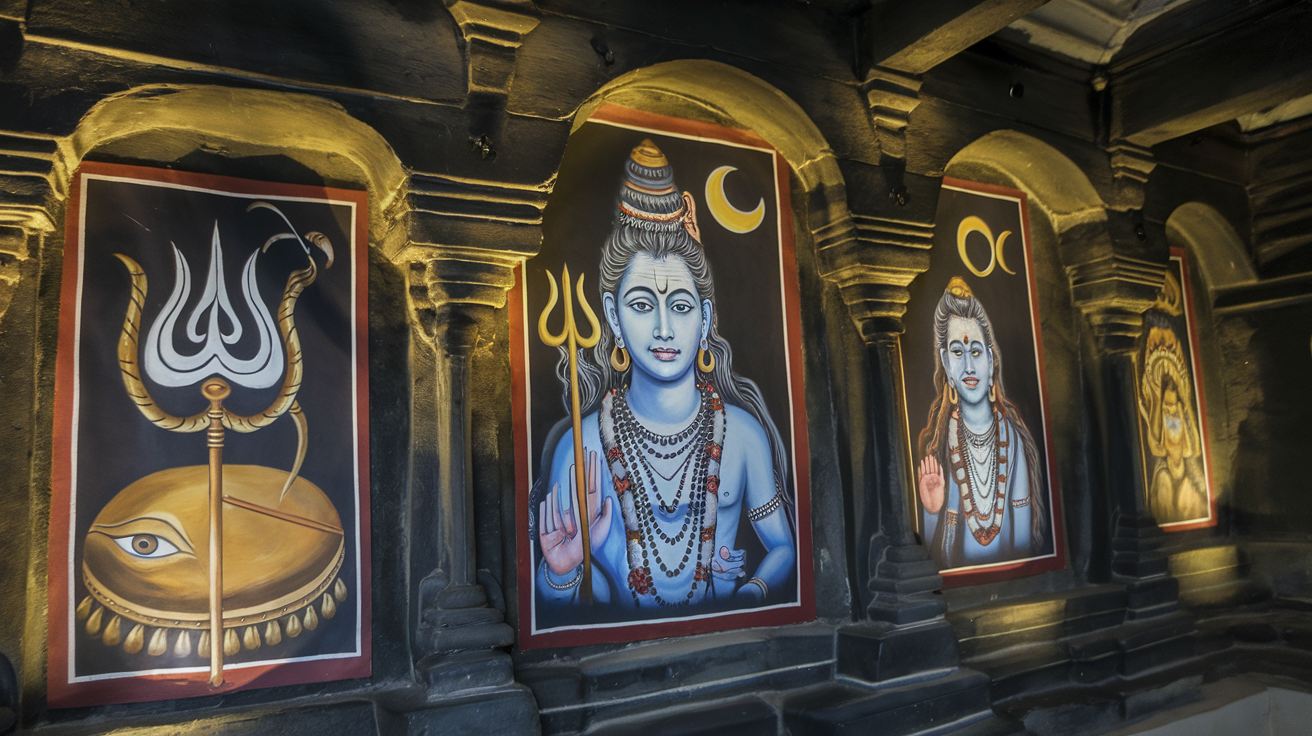
Decoding the Significance of the Third Eye
That third eye isn’t just a cool fashion statement. When you see Shiva’s paintings with that mystical eye centered on his forehead, you’re looking at raw cosmic awareness. Most artists don’t tell you this, but that single eye represents Shiva’s ability to see beyond our physical world.
Think about it – while we’re stuck seeing what’s right in front of us, Shiva’s third eye cuts through illusion. It’s literally the eye that burned desire to ashes when Kama, the love god, tried to disturb his meditation.
When painting this element, traditional artists use specific proportions that create an energy vortex on the canvas. The third eye is positioned exactly at what modern artists would call the “golden ratio” point of the face – no accident there!
The Cosmic Dance: Understanding Nataraja Depictions
Shiva’s cosmic dance might be the most misunderstood image in Hindu art. The Nataraja form shows Shiva balanced on one leg, surrounded by a ring of fire, with four arms moving in precise positions.
Each element tells a story:
- The dwarf demon (Apasmara) under his foot? That’s ignorance being crushed
- The drum in his upper right hand creates the universe’s sound
- The flame in his upper left destroys it
- The lower right hand says “don’t fear”
- The lower left points to his raised foot, promising liberation
The fire circle represents the cosmic cycles of creation and destruction. When you study authentic Nataraja paintings, you’ll notice the dance posture forms perfect geometric patterns that ancient gurus kept secret from casual practitioners.
Sacred Animals and Objects in Shiva Iconography
The animals and objects surrounding Shiva aren’t random decorative choices. Each carries power that makes these paintings so sought after.
The serpent coiled around his neck? That’s kundalini energy mastered. The bull Nandi represents dharma and strength – always facing Shiva in perfect devotion.
His trident (trishul) pierces through the three types of suffering, while the damaru drum sets the rhythm of cosmic time. The Ganga river flowing from his locks purifies everything it touches.
Traditional painters place these elements according to strict geometrical patterns. The composition forms hidden yantra patterns that activate when viewed – something modern reproductions completely miss.
Color Symbolism in Shiva Artwork
Colors in Shiva paintings speak a language all their own. The blue throat (Neelakantha) comes from swallowing poison to save the universe – a story every initiated artist knows by heart.
White represents purity and his connection to Mount Kailash. Red symbolizes both destruction and the vital energy of creation. Gold highlights divine consciousness.
The forbidden techniques involve layering these colors in specific sequences:
- White undercoating with specific mineral pigments
- Blue mixed with resonant materials for the body
- Red accents placed at energy points
- Gold applied during auspicious times
When these colors are applied following the ancient formulas, the painting doesn’t just represent Shiva – it becomes a portal for his energy. This is why traditional gurus guarded these techniques so carefully.
Contemporary Interpretations of Shiva in Art
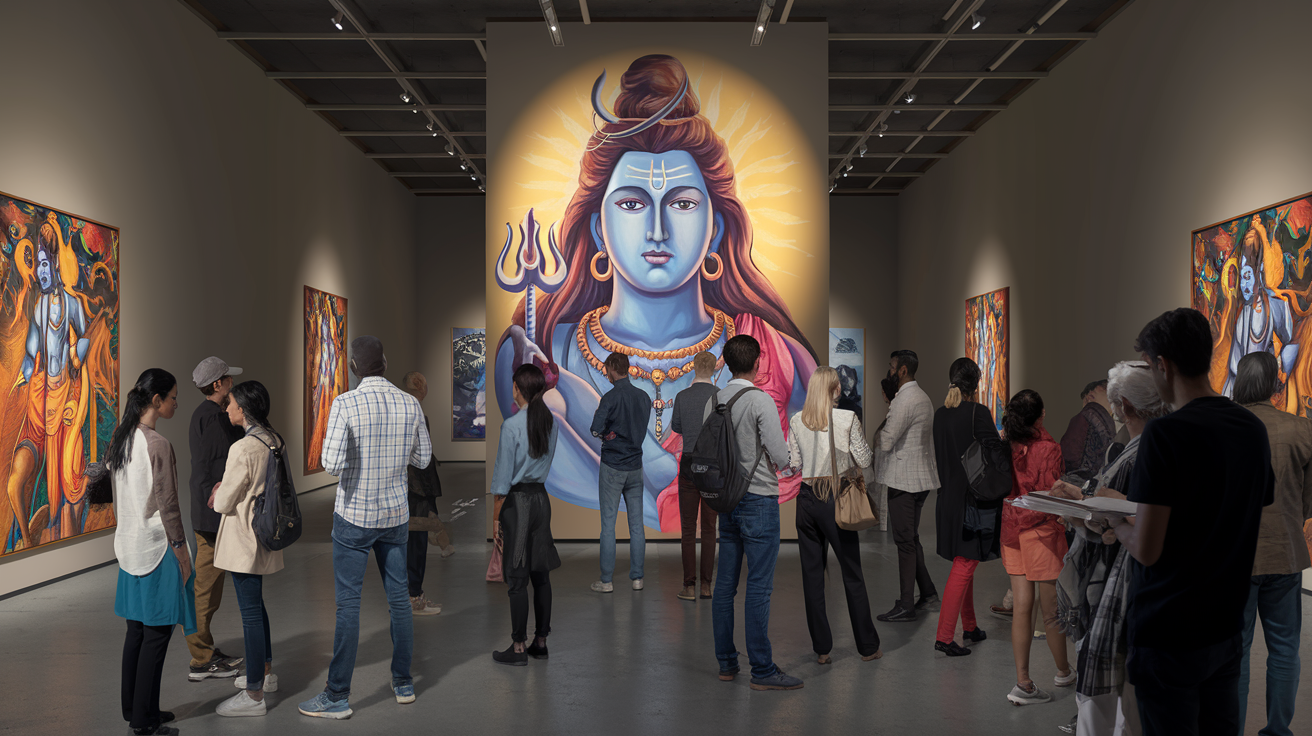
Modern Artists Reimagining Shiva for Today’s Audience
The art world has gone wild for Shiva reimaginings in recent years. Gone are the days when Shiva was only depicted in rigid, traditional poses. Today’s artists are breaking every rule in the book—and collectors can’t get enough.
Take Meera Sharma’s controversial “Shiva in the Metropolis” series. Her work places the deity in urban settings—think Shiva meditating on a skyscraper or dancing the Tandava in Times Square. The establishment called it blasphemous. The youth called it revolutionary. It sold out within hours.
Then there’s Raj Patel who combines classical techniques with punk aesthetics. His “Neon Nataraja” took the art world by storm in 2023, featuring Shiva with electric blue skin against stark black backgrounds, illuminated by actual neon tubes.
The forbidden technique? Breaking tradition itself. These artists understand what the gurus don’t want you to know—that Shiva represents transformation, and art must transform too.
Digital and Mixed Media Shiva Artworks
Digital artists aren’t just using new tools—they’re completely reshaping how we experience Shiva.
Anika Gupta’s augmented reality Shiva installation lets viewers witness the destruction and creation cycle in real-time. Point your phone at her canvas, and watch as Shiva dances, the universe collapses and rebuilds around you. It’s mind-blowing stuff.
Mixed media has exploded too:
- Vihaan Das incorporates actual ash from sacred fires into his paintings
- Sarah Johnson weaves copper wire through her canvases to represent Shiva’s matted locks
- The collective “Digital Devotees” creates AI-generated Shiva images based on thousands of ancient paintings
The secret these artists discovered? Shiva himself transcends medium. The deity of transformation embraces new technologies rather than rejecting them.
Global Influence on Contemporary Shiva Paintings
Shiva has gone global, baby. And it’s changing everything about how the deity is portrayed.
Japanese artist Kenji Yamamoto fuses ukiyo-e techniques with Shiva iconography, creating woodblock prints where Shiva appears with subtle manga influences. His “Cosmic Dance” series sold out in Tokyo, New York, and Mumbai simultaneously.
African influences are reshaping Shiva art too. Nigerian-Indian artist Adebayo Patel incorporates Yoruba patterns into Shiva’s garments and background elements. The result? A cross-cultural dialogue that traditional gurus dismissed until collectors started paying six figures.
European artists like Maria Kovalsky blend Renaissance composition techniques with Shiva subjects. Her “Shiva as Light” places the deity in Caravaggio-style dramatic lighting that makes traditional flat depictions look, well… flat.
What these global artists understand—and what traditional teachers hide—is that Shiva belongs to everyone who seeks transformation. The deity transcends cultural boundaries just as easily as cosmic ones.
How to Choose and Display Shiva Paintings
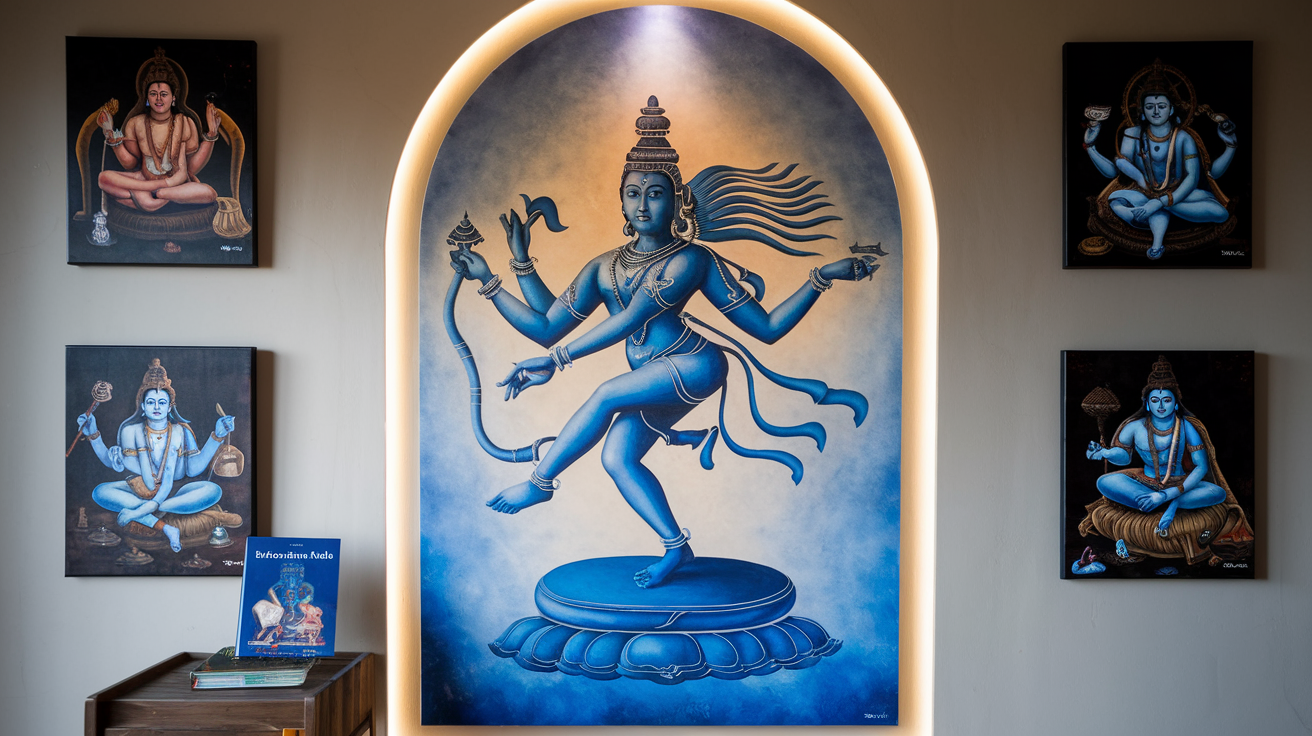
Selecting Authentic Shiva Artwork for Your Space
Picking the right Shiva painting isn’t just about aesthetics—it’s about energy.
You know that feeling when you walk into a room and something just feels off? That’s what happens when you choose artwork without intention. With Shiva pieces, authenticity matters more than price tag.
Look for artists who understand Shiva’s symbolism. The third eye should be positioned correctly, the crescent moon should sit just right on his matted locks, and the Ganga flowing from his hair should have that subtle ethereal quality.
Hand-painted works carry more spiritual vibration than mass-produced prints. Yes, they cost more, but there’s a reason for that. Each brushstroke contains the artist’s devotion and understanding of Lord Shiva’s cosmic energy.
Check the back of the artwork. Authentic pieces often include the artist’s blessing, signature, or sometimes even mantras inscribed in Sanskrit.
Energy and Vastu Considerations for Shiva Paintings
The wall you choose matters as much as the painting itself.
North-facing walls are ideal for Shiva artwork—they amplify his energy of transformation and renewal. East works too, aligning with his sunrise meditation practices.
Never hang Shiva paintings in bathrooms or bedrooms. I know that bedroom wall might seem perfect, but trust me, his intense energy can disrupt sleep patterns.
Some placements to avoid:
- Directly opposite your front door (overwhelming energy)
- Above beds (too activating for restful sleep)
- In dining areas (his ascetic energy can affect appetite)
For maximum energy flow, position the painting at eye level when seated. This creates a natural connection between you and the artwork during meditation or relaxation.
Preservation and Care Tips for Religious Artwork
Shiva paintings deserve proper care—they’re not just decor but spiritual instruments.
Direct sunlight is your artwork’s worst enemy. It fades colors and damages traditional pigments, especially natural dyes used in authentic pieces. Use UV-protected glass for framing or position away from windows.
Humidity control is crucial, especially for paintings on silk or handmade paper. A climate between 40-55% humidity works best.
Before cleaning, remember this isn’t just any picture. Many traditional artists infuse their works with sacred ash or blessed materials. Never use chemical cleaners—just a soft, dry microfiber cloth for dusting.
For traditional paintings created with natural pigments:
- Never touch the surface directly
- Avoid chemical air fresheners nearby
- Consider a professional blessing ceremony annually
Pairing Shiva Paintings with Complementary Décor Elements
Shiva’s energy works best when it can breathe. Crowding his image with other deities or busy decorative elements dilutes the impact.
The perfect companions for Shiva artwork are simple, natural elements:
- A small copper or brass water vessel below the painting
- Unadorned rudraksha beads in a simple dish
- A single clear crystal to amplify energy
- White or blue silk fabric as a subtle drape
Avoid placing contradictory energies nearby—Lakshmi images (wealth) clash with Shiva’s renunciate nature. Ganesha (his son) works well, creating a balanced family energy.
Lighting matters tremendously. Soft, diffused lighting enhances the mystical quality of Shiva paintings. Consider a dedicated oil lamp or natural beeswax candle (never scented) that can be lit during meditation or special occasions.
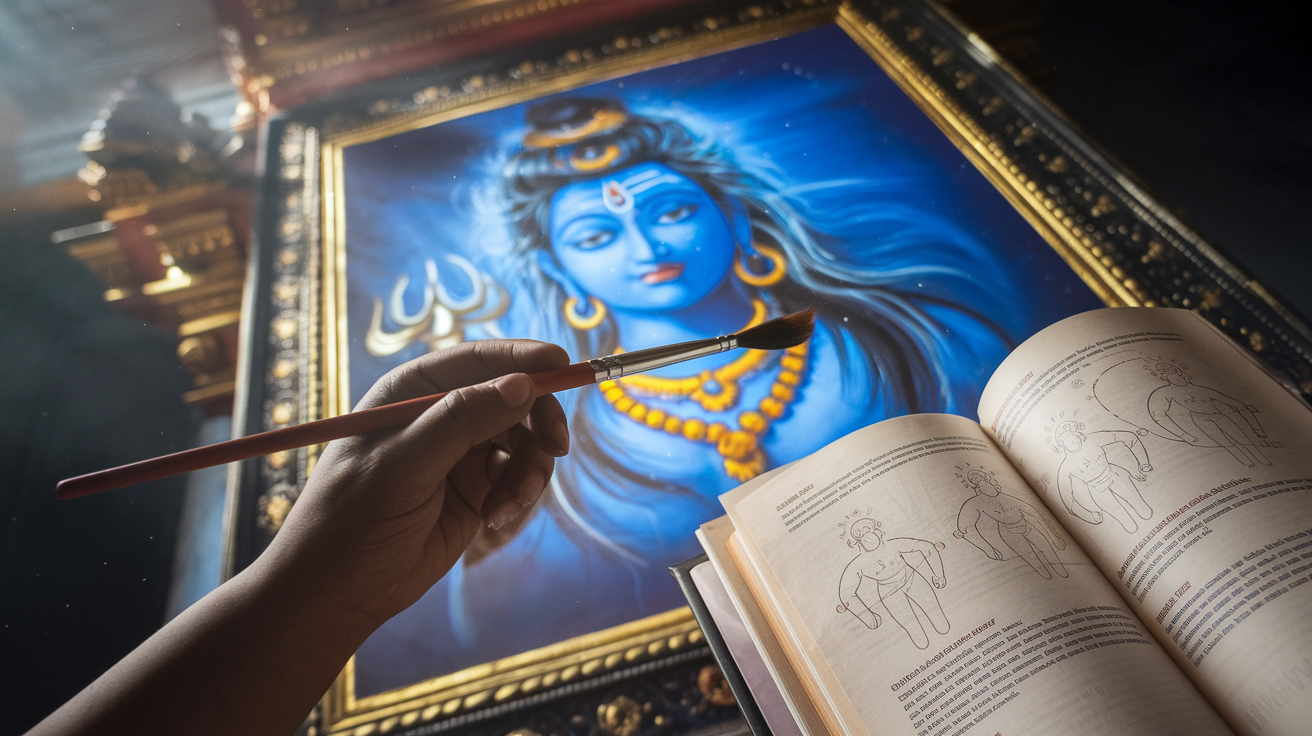
The ancient art of Shiva painting carries profound spiritual significance, blending mythology, symbolism, and artistic technique. From traditional styles that honor centuries-old conventions to contemporary interpretations that breathe new life into divine imagery, these works serve as both devotional objects and aesthetic masterpieces. The careful selection of symbolic elements—from the damaru drum to the third eye—creates layers of meaning that connect viewers to deeper spiritual truths.
As you consider bringing a Shiva painting into your home or space, remember that these aren’t merely decorative pieces but portals to contemplation. Choose artwork that resonates with your personal spiritual journey, and display it in a location that allows for quiet reflection. Whether you’re drawn to classical renditions or modern reinterpretations, the essence of Shiva’s transformative energy can become a powerful presence in your daily life, reminding us of the delicate balance between creation and destruction that shapes our world.


